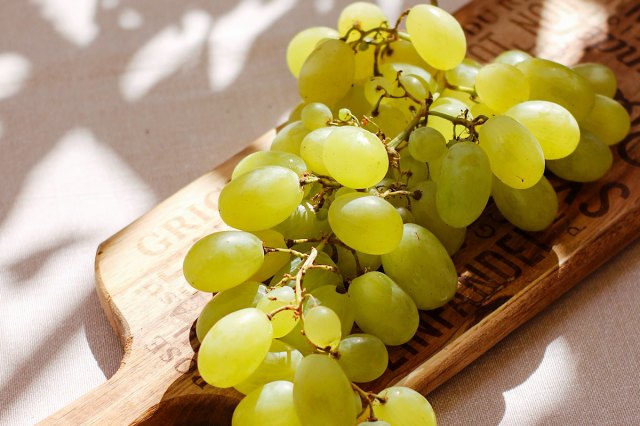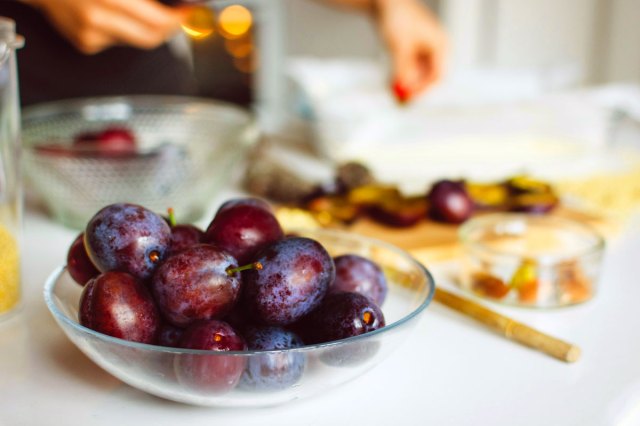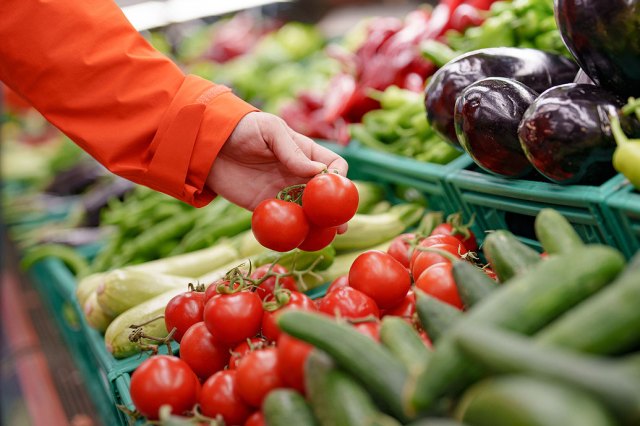If you walk into the produce section of a grocery store, you’re sure to see many people wondering the same things: Do I smell this fruit to know it’s good? Should I press the flesh? Is a little bruising okay? Has it gone bad if it’s too soft? Picking out ripe, quality fruit should be an easy task, but often it’s a confusing chore. Don’t let the produce aisle intimidate you. Here’s a guide to choosing perfectly ripe fruits every time.

Apples
Apples are often the heavy hitters of the grocery store fruit aisle: They’re available year-round, come in a large variety, and are cheaper by the pound than most other fruit. Still, inspect apples before they’re added to your cart (even the pre-bagged options). Apples should be firm to the touch with no bruises or punctures; the skin should feel smooth and naturally shiny.

Avocados
Avocados are notoriously tricky when it comes to determining ripeness. Don’t just go by exterior color or texture — a quality avocado can be green, brown, or purple-black and have bumpy or smooth skin. Avoid avocados with large dents or soft spots, which means they’re likely bruised. Instead, gently squeeze the fruit, which should be met with soft resistance. Additionally, the “belly button” of an avocado, which was attached to the stem, gets looser as the avocado ripens. If an avocado is ripe, the belly button should pop right off to reveal a bright green interior.

Bananas
Banana ripeness is a personal preference — about 5% of Americans prefer the tropical fruit in its green, unripe state. However, there are a few quality pitfalls to watch out for. Skip over bananas with visible bruising or punctures and ones already brown as they are overripe.
Reader Favorites

Berries
The berry family is extensive — blueberries, blackberries, strawberries, and raspberries are the most common types at American grocery stores year-round. Select the best bunch by looking for firm, dry fruit with bright colors. Prepackaged berries should be uniform in size with a plump appearance since shriveled berries are typically past their prime. Be sure to flip the container over to examine the bottom layer of berries, avoiding packages where any berries are crushed or have visible mold.

Citrus
Ripe citrus is easy to pick with the help of your nose. Ripe grapefruit, oranges, lemons, and limes should have a fragrant smell and relatively smooth skin, free from blemishes and scrapes. Pass up citrus fruits that have soft spots or feel spongy in your hand, indicating they’re bruised and starting to spoil.

Grapes
When buying bagged grapes, examine how many in the bunch are still attached to the stem. Fresh, plump grapes cling tightly to their stems, while older and poor-quality fruits will shrivel and detach and often look bruised.

Melons
Most melon lovers have their own tricks for picking a perfect melon, though if you’ve never had much luck, here’s what to look for. Cantaloupe should have a soft, fruity smell with thick veins across the exterior rind and no soft spots. Honeydew should have a velvety feel in your hands with a yellowish to creamy white color. And watermelon, the queen of summertime picnics, should have a smooth rind with a yellow “belly,” aka the spot where the melon sat on the ground as it grew. With all melons, an overpowering smell indicates it’s likely overripe.

Stone Fruit
Peaches, plums, and pears get their nickname from the pits they contain inside, which resemble rocks. However, when picking out any of these fruits, the outer peel will give you a clue that they’re ready for snacking. Peaches and plums should have deep, vibrant coloring, with a firmness that gives a little when squeezed (pears included, which are often picked before they’re ripe). Avoid any stone fruit that looks bruised or feels delicately soft or mushy.

Pineapple
Whole pineapples are fragrant and juicy when perfectly ripe, so sniff your selection to determine if it has a soft, sweet smell while also gauging its size — it should feel weighty in your hand. The stem leaves should look fresh, not dried or discolored, indicating the pineapple may be past its peak. While pineapples have a rough exterior, be on the lookout for bruising or soft spots that could reveal spoilage when cut open.

Tomatoes
Tomatoes aren’t typically categorized as fruits when it comes to use or flavor, though botanically, these oblong and globe-shaped foods are fruit. Look for a bright, shiny skin that’s blemish-free. Ripe tomatoes are firm when squeezed and may smell uniquely tomato-ey without being intensely sour.
Featured Image Credit: ZeynepKaya/ iStock
More From Our Network
Better Report is part of Optimism, which publishes content that uplifts, informs, and inspires.














